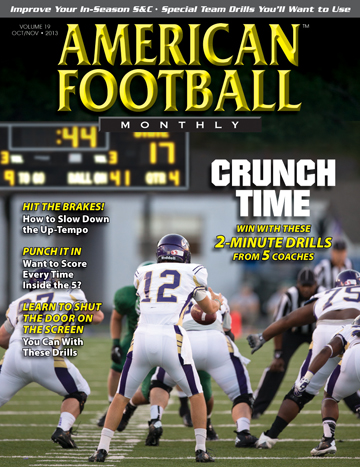Article CategoriesAFM Magazine
|
Speed Report: Combining In-Season Conditioning with In-Season Speed Trainingby: Dale BaskettFootball Speed Specialist © More from this issue Combining the two – in-season conditioning and speed training – is a subject that often comes up for discussion when I’m doing clinics and workshops across the country at various high schools and colleges. We always discuss the physiological energy mechanisms and how they function when we train. The same question seems to arise each time: What’s the best way to condition during the season? The answer is usually not well-received. My reply is that we need to understand how the game is played physiologically. If you run athletes hard and often with short recovery time between efforts, your athletes are being exposed to overtraining. Consequently, you’re training the wrong metabolic system and will not be tapping the proper system that is required. Limited recovery with constant brutal sprinting is going to keep the heart rate at ma....The full article can only be seen by subscribers.
|
|
|||||||
| HOME |
MAGAZINE |
SUBSCRIBE | ONLINE COLUMNISTS | COACHING VIDEOS |
Copyright 2025, AmericanFootballMonthly.com
All Rights Reserved





